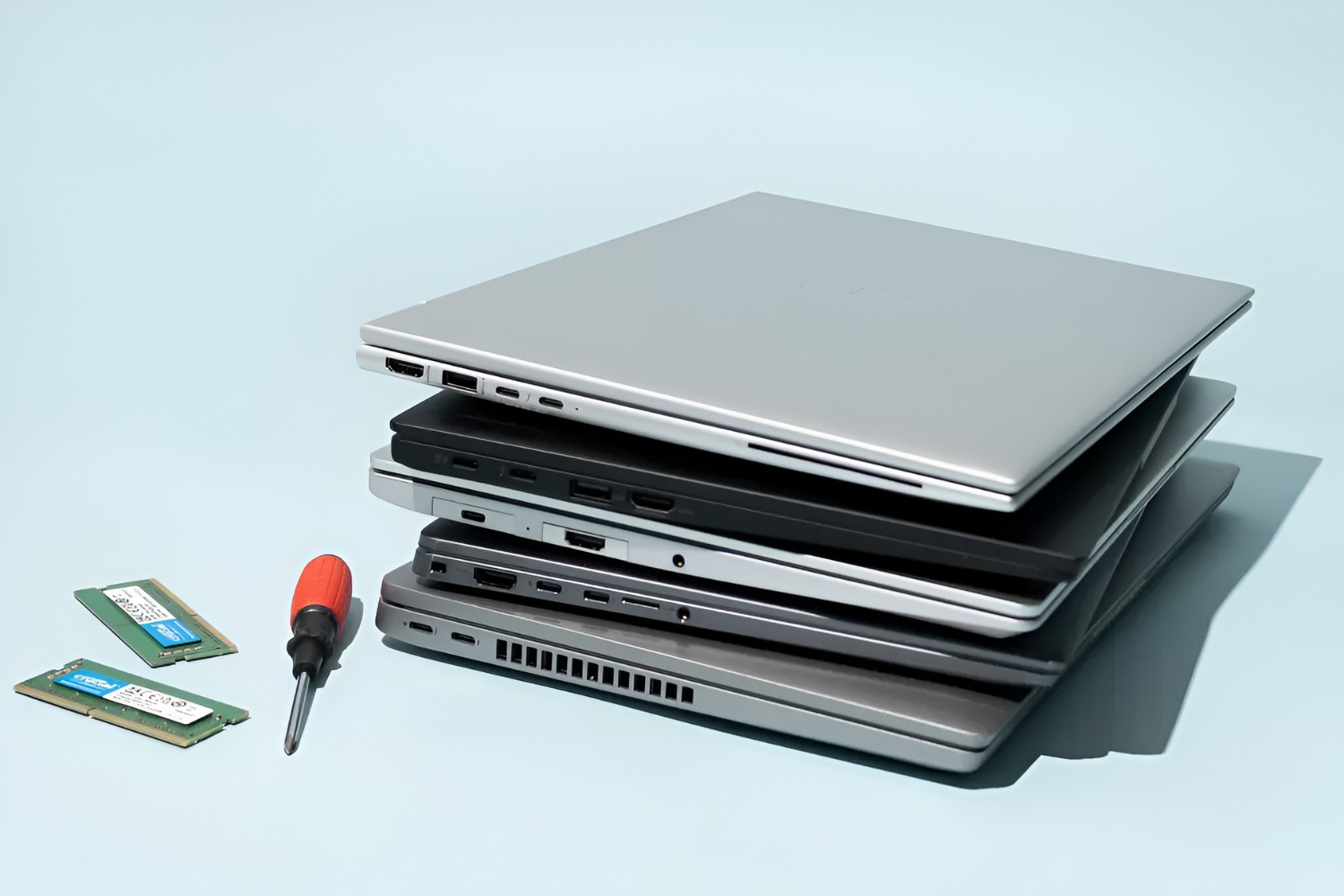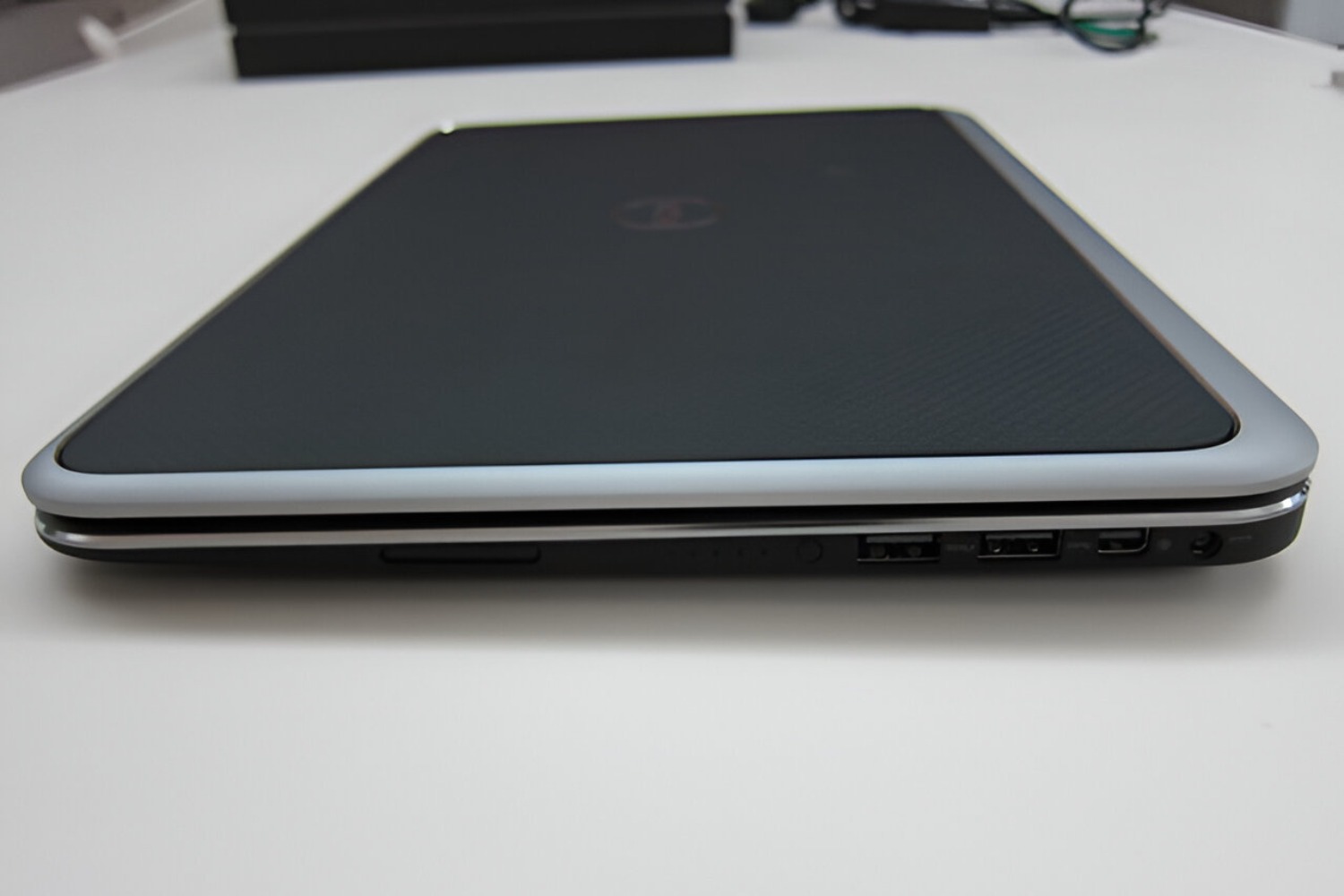Introduction
Welcome to this guide on how to perform a factory reset on a Dell Ultrabook. Whether you are experiencing technical issues, want to improve performance, or simply need a fresh start, a factory reset can be an effective solution. By resetting your Dell Ultrabook to its original factory settings, you can erase all personal data and restore it to the state it was in when you first purchased it.
It’s important to note that a factory reset will delete all files, applications, and settings on your Ultrabook. Therefore, it is crucial to back up any important data before proceeding with the reset process. Once the reset is complete, you will need to reinstall any necessary software and personalize your Ultrabook to fit your needs.
In this guide, we will take you through the step-by-step process of resetting your Dell Ultrabook to its factory settings. By following these instructions carefully, you can ensure a smooth and successful reset, allowing you to start afresh with your Ultrabook.
Step 1: Backup important data
Before proceeding with a factory reset, it’s crucial to back up any important data that you want to keep. This includes documents, photos, videos, and any other files that you don’t want to lose during the reset process. By creating a backup, you can ensure that your valuable information remains safe and accessible after the reset.
There are several ways to back up your data on a Dell Ultrabook. One option is to use an external hard drive or USB flash drive. Simply connect the storage device to your Ultrabook and copy the desired files onto it. Alternatively, you can use cloud storage services like Google Drive, Dropbox, or Microsoft OneDrive to upload and store your files securely online.
To backup your data using a cloud storage service, sign in to your account and upload the desired files to the cloud. Make sure to check that the upload is complete and verify the integrity of the files before proceeding with the factory reset.
Additionally, Dell Ultrabooks often come with built-in backup software that allows you to create a backup of your files. This software provides a convenient and user-friendly way to safeguard your data. Simply follow the on-screen instructions to select the files you want to backup and choose a backup destination, such as an external drive or cloud storage.
Remember, the goal of backing up your data is to ensure that you have a copy of all important files stored in a safe location. Take your time to review your files and confirm that all necessary data has been backed up before proceeding to the next step of the factory reset process.
Step 2: Restart the Dell Ultrabook
Once you have successfully backed up your important data, the next step in the factory reset process is to restart your Dell Ultrabook. Restarting the device will ensure that you are starting from a clean slate and will help to avoid any potential conflicts during the reset.
To restart your Dell Ultrabook, follow these simple steps:
- Save any open files or applications and close all running programs.
- Click on the “Start” button located at the bottom left corner of your screen.
- Select the “Power” option from the menu that appears.
- Choose the “Restart” option from the sub-menu.
- Your Dell Ultrabook will now begin the restart process.
It’s important to note that restarting your Ultrabook may take a few minutes, depending on the device’s specifications. During this time, the system will shut down and power on again, ensuring a fresh start for the factory reset.
Once the restart process is complete, your Dell Ultrabook will be ready for the next steps in the factory reset process. It is essential to follow each step carefully to ensure a successful reset and avoid any potential data loss or system instability.
Step 3: Access the Advanced Boot Options menu
In order to perform a factory reset on your Dell Ultrabook, you will need to access the Advanced Boot Options menu. This menu provides a range of advanced troubleshooting and recovery options, including the option to reset your device to its factory settings.
Here’s how you can access the Advanced Boot Options menu:
- Start by turning off your Dell Ultrabook completely.
- Next, press the power button to turn on the Ultrabook.
- As soon as the Dell logo appears on the screen, press the F8 key repeatedly until you see the Advanced Boot Options menu.
It’s important to note that timing is crucial when pressing the F8 key. If you miss the timing and the Windows logo appears, you’ll need to restart your Ultrabook and try again. Be patient and persistent until you successfully access the Advanced Boot Options menu.
Once you have successfully accessed the Advanced Boot Options menu, you will be presented with a list of options. This menu allows you to choose various troubleshooting and recovery options, such as Safe Mode, System Restore, and Command Prompt. To proceed with the factory reset, you will need to select the repair option.
Now that you’ve successfully accessed the Advanced Boot Options menu, you can move on to the next step of the factory reset process. Remember to follow each step carefully to ensure a successful reset and avoid any potential errors or complications.
Step 4: Choose the repair option
After accessing the Advanced Boot Options menu on your Dell Ultrabook, the next step in the factory reset process is to choose the repair option. This option will allow you to access the recovery tools necessary to initiate the factory reset.
Here’s how you can choose the repair option:
- Using the arrow keys on your keyboard, navigate to the “Repair Your Computer” or “Repair” option in the Advanced Boot Options menu.
- Once the repair option is highlighted, press the Enter key to select it.
By selecting the repair option, you are indicating to your Ultrabook that you want to access the recovery tools and proceed with the factory reset process. This will take you to the next step of the reset, where you will be prompted to choose the language and login as the Administrator.
It’s important to note that the options and labels in the Advanced Boot Options menu may vary slightly depending on the model and version of your Dell Ultrabook. However, the repair option is usually prominently displayed and easy to identify.
Once you have successfully chosen the repair option, you are one step closer to completing the factory reset process. Make sure to follow each step carefully and read all on-screen instructions to ensure a successful reset and avoid any potential issues or data loss on your Ultrabook.
Step 5: Select the language and login as Administrator
After choosing the repair option in the previous step, you will now be prompted to select the language and login as the Administrator. These settings are important as they determine the language in which the factory reset process will be conducted and the level of access you have to make system changes.
Here’s how you can select the language and login as Administrator:
- In the language selection screen, choose your preferred language from the available options. Use the arrow keys on your keyboard to navigate through the list of languages.
- Once you have selected the language, click on the “Next” button or press Enter to continue.
- In the login screen, you will need to enter the login credentials for the Administrator account. The Administrator account typically has elevated privileges and allows you to make system changes.
- Type in the username and password for the Administrator account into the provided fields. If you haven’t set up an Administrator account, you can leave the fields blank or try using common default credentials like “Admin” for the username and leaving the password field blank.
- Click on the “OK” button or press Enter to proceed.
Once you have successfully selected the language and logged in as Administrator, you will gain access to the recovery options and tools necessary to initiate the factory reset process.
It’s important to note that the login credentials required may vary depending on the setup of your Dell Ultrabook. If you are unsure about the Administrator username and password, refer to the documentation or contact Dell support for assistance.
By selecting the language and logging in as Administrator, you are ready to move on to the next step of the factory reset process and access the recovery options that will allow you to perform the reset.
Step 6: Access the recovery options
After selecting the language and logging in as Administrator, you will now have access to the recovery options on your Dell Ultrabook. These options provide you with the necessary tools to initiate the factory reset and restore your device to its original settings.
Here’s how you can access the recovery options:
- Once you have logged in as Administrator, you will be presented with a menu of recovery options.
- Look for and select the “Recovery” or “Restore” option from the menu. This option may be labeled differently depending on the specific model and version of your Dell Ultrabook.
- Click on the “Next” button or press Enter to proceed.
By accessing the recovery options, you are indicating to your Ultrabook that you want to initiate the factory reset process and restore your device to its original factory settings. The recovery options may include additional features such as system image recovery or system repair, but for the purpose of performing a factory reset, select the option that specifically states “Factory Reset” or “Reset to Factory Settings”.
It’s important to note that performing a factory reset will erase all personal data, applications, and settings on your Dell Ultrabook. Make sure you have backed up any important data before proceeding further.
Once you have successfully accessed the recovery options, you are ready to move on to the next step of the factory reset process and confirm the reset.
Step 7: Choose the factory reset option
Now that you have accessed the recovery options on your Dell Ultrabook, the next step in the factory reset process is to choose the factory reset option. This option will initiate the process of restoring your device to its original factory settings and erasing all personal data and settings.
Here’s how you can choose the factory reset option:
- In the recovery options menu, look for and select the “Factory Reset” or “Reset to Factory Settings” option. The exact label may vary depending on the specific model and version of your Dell Ultrabook.
- Take a moment to carefully read any on-screen instructions or additional information provided about the factory reset process. This will help you understand the implications of the reset and ensure that you are fully informed.
- Once you are ready to proceed with the factory reset, click on the “Next” or “Reset” button, or press Enter to confirm your selection.
By choosing the factory reset option, you are confirming that you want to restore your Dell Ultrabook to its original factory settings. This process will erase all personal data, including files, applications, and settings, so it’s vital to ensure that you have made a backup of any important data beforehand.
It’s important to note that, depending on the model and version of your Dell Ultrabook, you may be prompted to choose additional options during the factory reset process, such as whether to perform a quick reset or a thorough reset. Review the options carefully and choose the option that best suits your needs.
Once you have successfully chosen the factory reset option, you are ready to initiate the reset process and restore your Dell Ultrabook to its original factory settings.
Step 8: Confirm the reset and wait for it to complete
After selecting the factory reset option, the next step in the process is to confirm the reset and wait for it to complete. Confirming the reset will initiate the restoration of your Dell Ultrabook to its original factory settings.
Here’s how you can confirm the reset and wait for it to complete:
- Read the on-screen instructions or prompts carefully before confirming the reset. Take note of any additional information or warnings that may be provided.
- Once you are ready to proceed, click on the “Reset” or “Confirm” button, or press Enter to confirm the factory reset.
- Wait patiently while the reset process takes place. This may take some time, depending on the specifications of your Dell Ultrabook.
During the factory reset process, your Ultrabook will reformat the hard drive and reinstall the original operating system and software. All personal data, applications, and settings will be permanently deleted, so it’s crucial to ensure that you have backed up any important data beforehand.
While the reset is in progress, it’s recommended to avoid interrupting the process or turning off your Ultrabook. Doing so can lead to errors or incomplete restoration. Instead, allow the reset process to run its course and wait until it completes.
Once the factory reset process is complete, your Dell Ultrabook will be restored to its original factory settings. It will be as if you had just purchased the device, with a clean slate for you to configure and personalize according to your preferences.
Now that you have confirmed the reset and are waiting for it to complete, you are nearing the end of the factory reset process. After the reset is finished, you will need to follow the final step of personalizing your Ultrabook again.
Step 9: Personalize your Ultrabook again
After the factory reset of your Dell Ultrabook is complete, it’s time to personalize your device again. This step involves configuring settings, reinstalling software, and customizing your Ultrabook to meet your specific needs and preferences.
Here’s how you can personalize your Ultrabook again:
- Set up your user account: If prompted, create a new user account or log back into your existing account. This will allow you to access all the features and settings of your Ultrabook.
- Connect to a Wi-Fi network: If your Dell Ultrabook requires an internet connection, connect to a Wi-Fi network by selecting the desired network from the available options and entering the network password if prompted.
- Install necessary software: Begin reinstalling any software or applications that you need on your Ultrabook. This may include productivity tools, media players, web browsers, and any other software you frequently use.
- Update Windows and drivers: It’s essential to keep your operating system and drivers up to date for optimal performance and security. Check for Windows updates and install any necessary driver updates for your Ultrabook.
- Customize settings: Adjust various settings according to your preferences. This includes personalizing desktop backgrounds, changing display settings, setting up screen savers, adjusting power settings, configuring security and privacy preferences, and more.
- Restore files and data: If you have previously backed up your data, you can now restore your files to your Ultrabook. Use a USB drive, external hard drive, or cloud storage to transfer your files back onto the device.
By personalizing your Dell Ultrabook again, you are making it feel like your own device, tailored to your work and lifestyle. It may take some time to reinstall software, configure settings, and restore files, but this step allows you to create a personalized and efficient setup.
Remember to take note of any product keys, license information, or registration details that you may need for software installations. It’s also a good idea to periodically back up your data to avoid losing important files in the future.
Congratulations! You have successfully completed the factory reset process on your Dell Ultrabook and personalized it according to your preferences. Enjoy the fresh start and improved performance of your device!
Conclusion
Performing a factory reset on your Dell Ultrabook can be a beneficial solution for various reasons, such as troubleshooting technical issues, improving performance, or starting fresh with a clean slate. By following the step-by-step guide outlined in this article, you can successfully reset your Ultrabook to its original factory settings.
Remember, before initiating the reset process, it is crucial to back up any important data that you want to keep. This ensures that your files and information remain safe and accessible after the reset. Take advantage of external storage devices or cloud storage services to create a backup of your important files.
Throughout the reset process, carefully follow each step and pay attention to any on-screen instructions or warnings. Timing may be critical when accessing the Advanced Boot Options menu or selecting the repair option. Patience and persistence are key to successfully navigating through these steps.
Once the factory reset is complete, take the time to personalize your Dell Ultrabook again. Reinstall your necessary software, update Windows and drivers, customize settings, and restore your files and data. By personalizing your Ultrabook, you can create a setup that suits your preferences and requirements.
By resetting your Dell Ultrabook to its original factory settings, you can enjoy a fresh start and improved performance. However, it’s important to note that a factory reset will permanently delete all personal data, applications, and settings. Therefore, ensure that you have made a backup of any important data before proceeding.
Remember, if you are unsure about any step or encounter any issues during the factory reset process, it is advisable to seek assistance from Dell support or consult the manufacturer’s documentation for guidance.
With the completion of the factory reset process and personalization of your Ultrabook, you are now ready to make the most out of your device. Enjoy the renewed performance and the clean slate that allows you to customize it according to your needs and preferences.

























